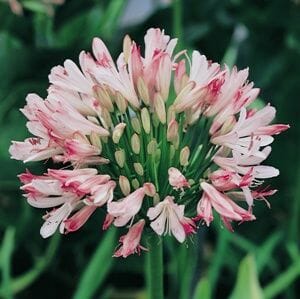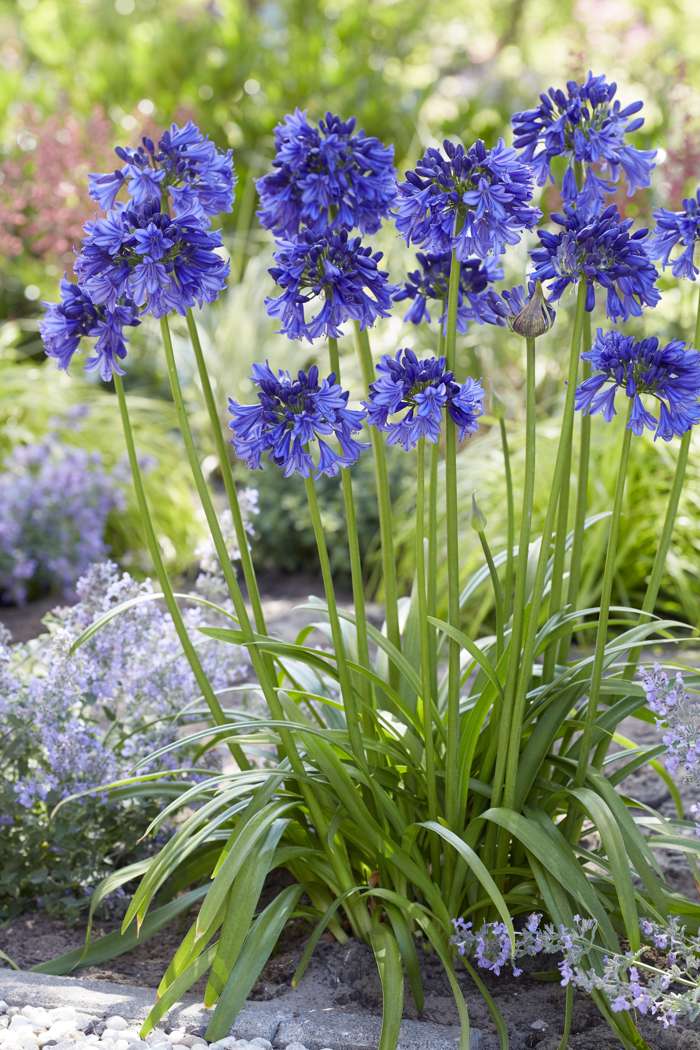Seasonal Agapanthus Care: Preparing for Wintertime and Summer
Seasonal Agapanthus Care: Preparing for Wintertime and Summer
Blog Article
Releasing the Secret to Successful Agapanthus Cultivation: Advice for a Flourishing Garden
In the world of gardening, growing agapanthus efficiently needs a strategic method that encompasses numerous elements of plant treatment. With careful interest to information, one can open the keys to nurturing these sensational blooms, resulting in a garden that grows with elegance and vibrancy. By understanding the subtleties of agapanthus farming, one can produce a setting where these plants prosper and flower perfectly. In the following discussion, we will certainly check out crucial ideas and techniques that will direct you in the direction of a thriving agapanthus garden, supplying understandings right into best methods, soil problems, sprinkling strategies, and much more.
Planting Agapanthus: Finest Practices
When planting Agapanthus, proper soil preparation is necessary for making sure effective growth and development of these attractive flowers. Agapanthus, typically recognized as Lily of the Nile or African lily, grows in well-draining dirt with a somewhat acidic to neutral pH degree - Agapanthus. Prior to growing, it is vital to change hefty clay dirts with organic issue such as compost or peat moss to improve water drainage and give important nutrients for the plants
To grow Agapanthus, select a place that receives complete sunshine to partial shade, as this will certainly promote healthy and balanced growth and abundant flowering. Dig an opening twice the size of the plant's root sphere and place the Agapanthus at the exact same deepness it was previously growing. Gently backfill the opening with dirt, pushing down firmly to get rid of any type of air pockets around the roots.
Water the freshly grown Agapanthus extensively and remain to keep the soil evenly wet, specifically during the plant's energetic expanding season. Agapanthus. Applying a balanced plant food once a month can further sustain the plant's development and blooming. By complying with these finest methods for planting Agapanthus, you can produce a sensational display screen of these exciting blossoms in your yard
Ideal Soil Issues for Agapanthus
For optimal growth and blooming success of Agapanthus plants, making certain the soil problems are suitable is vital. Agapanthus prospers in well-draining dirt with a somewhat acidic to neutral pH level varying from 6.0 to 7.0. This sort of dirt enables ample water drain, avoiding waterlogging which can bring about root rot. To boost dirt drain, take into consideration adding organic matter such as garden compost or peat moss when preparing the planting site. Moreover, Agapanthus chooses soil that is abundant in nutrients, so incorporating a well balanced fertilizer throughout the growing period can promote healthy development and vivid blooms.

Watering and Fertilizing Tips
To make sure healthy development and vivid blossoms, appropriate watering and feeding strategies are crucial for effective Agapanthus farming. Agapanthus plants benefit from routine watering, specifically throughout the growing season. It is advised to water deeply when a week, ensuring the soil is wet yet not waterlogged. Throughout hot weather condition or in pots, even more frequent watering might be required to avoid the soil from drying out completely.
When it pertains to feeding Agapanthus, a well balanced plant food with equal parts nitrogen, phosphorus, and potassium can be applied in the spring to promote healthy growth and blooming. Slow-release plant foods are suitable for giving nutrients progressively over an extensive period. Stay clear of over-fertilizing, as this can cause excessive vegetation growth at the expenditure of blooms.
In addition, incorporating raw material like compost right into the soil can enhance nutrient levels and improve dirt framework, aiding in the total health and wellness of the Agapanthus plants. By complying with these watering and fertilizing tips, garden enthusiasts can guarantee their Agapanthus plants thrive and generate stunning screens of flowers.
Trimming and Deadheading Techniques
Appropriate pruning and deadheading methods play a crucial role in keeping the health and visual appeals of Agapanthus plants, complementing the important techniques of watering and fertilizing for effective growing. Pruning Agapanthus includes removing spent flower heads, dead or yellowing leaves, and overall shaping of the plant to promote better development. Deadheading, the process of eliminating discolored blossoms, not only boosts the plant's appearance however also motivates further flowering.
When deadheading Agapanthus, it is a good idea to clip off the blossom stem at the base utilizing sharp, clean shears. This process redirects the plant's energy from seed manufacturing back into origin and foliage development, advertising a much healthier and more robust plant. Regular deadheading can prolong the growing period of Agapanthus and stop self-seeding, which can bring about this hyperlink congestion.
In regards to pruning, Agapanthus usually advantages from a light trim after blossoming to tidy up the plant and motivate fresh development. Reducing the invested blossom stems and removing any kind of damaged or dead vegetation aids preserve the plant's vigor and overall look. Nonetheless, it is check out here necessary to stay clear of cutting into the crown of the plant, as this can deteriorate its wellness.

Protecting Agapanthus From Pests and Diseases
Implementing effective insect and disease management methods is essential to safeguarding the wellness and vitality of Agapanthus plants in farming. One typical bug that affects Agapanthus is the Agapanthus borer, a caterpillar that passages into the plant, creating damage to the fallen leaves and blossoms.
In addition to bugs, Agapanthus are at risk to diseases such as root rot and fungal fallen leave spots. By staying cautious and resolving pest and condition issues immediately, garden enthusiasts can help their Agapanthus flourish and thrive.

Conclusion
Finally, successful growing of agapanthus needs correct growing methods, suitable dirt problems, appropriate watering and feeding, routine pruning and deadheading, and protection from pests and conditions. By adhering to these tips and tricks, gardeners can guarantee a flourishing garden loaded with beautiful agapanthus blooms. Agapanthus. Keep in mind to maintain regular treatment and attention to detail to advertise the health and wellness and longevity of these spectacular plants
When planting Agapanthus, proper soil prep work is important for making certain successful development and growth of these attractive flowers.Water the recently planted Agapanthus extensively and continue to keep the dirt evenly damp, particularly throughout the plant's active growing period.For ideal development and growing success of Agapanthus plants, making sure the soil problems are excellent is crucial. When growing or hair transplanting Agapanthus, make sure the soil is well-prepared to give the required structure for the plants to develop themselves successfully. One common pest that impacts Agapanthus is the Agapanthus borer, a caterpillar that passages into the plant, creating damages site web to the flowers and leaves.
Report this page